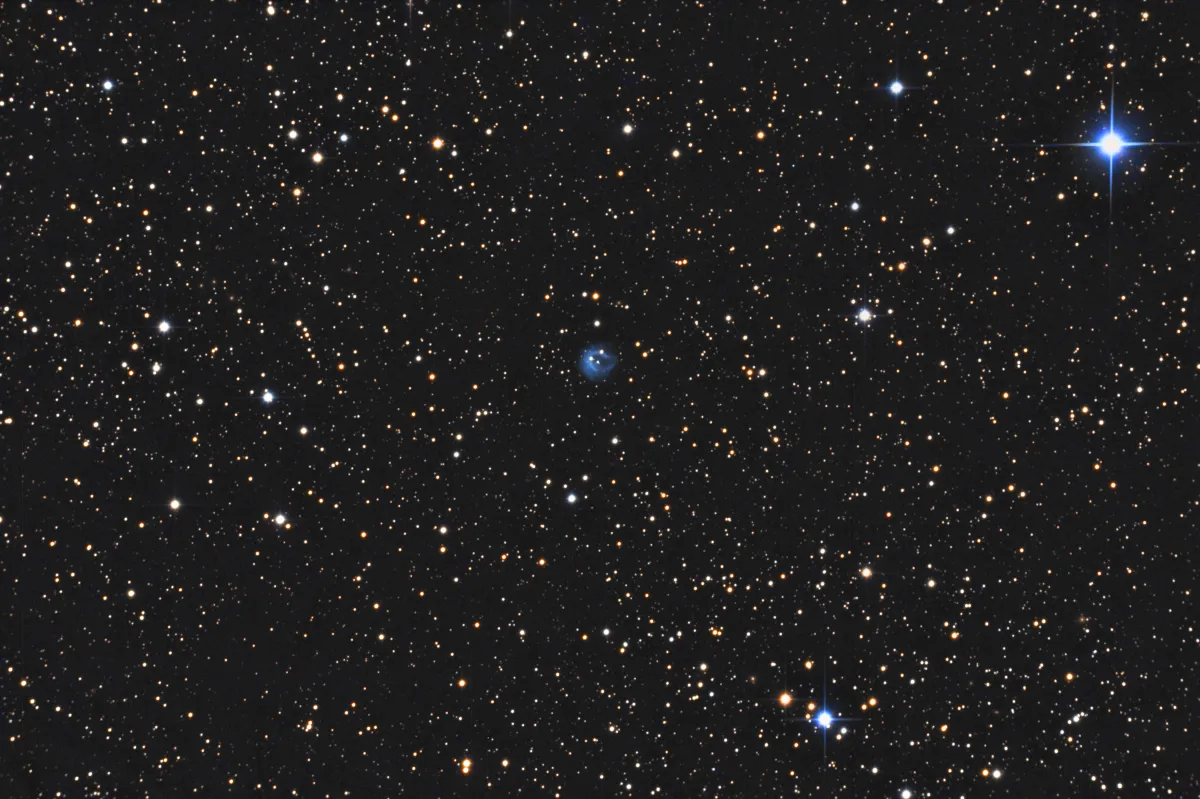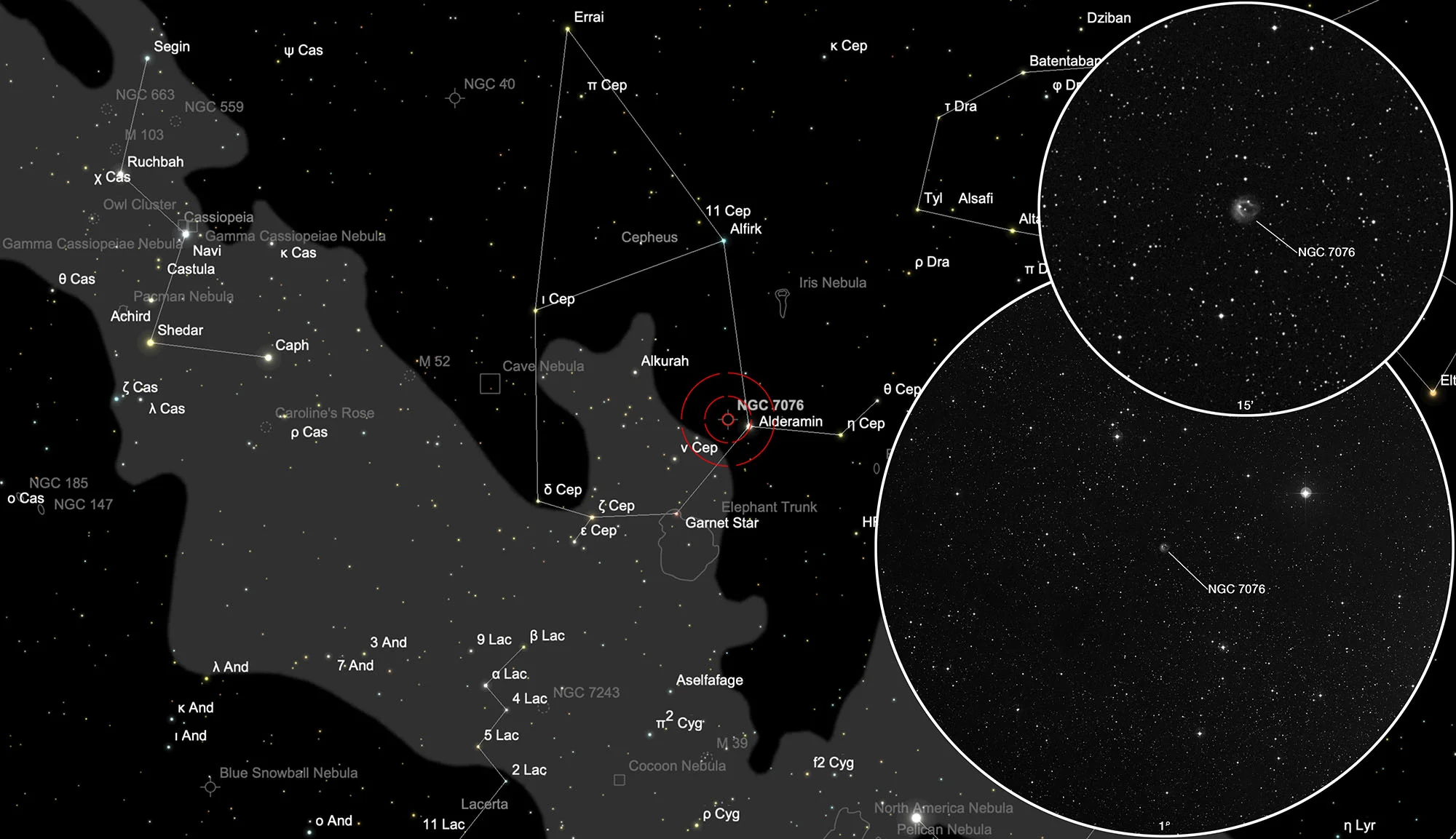Planetary Nebula NGC 7076

History
The nebula NGC 7076 was discovered by William Herschel on 15 October 1794. J. L. E. Dreyer described the nebula as very faint and easy to resolve. George Ogden Abell then identified NGC 7076 on the «Palomar Observatory Sky Survey» (POSS) photoplates in 1964 and then listed it as number 75 in his 1966 list of 86 PNs discovered on the POSS photoplates. [196]
Physical Properties
NGC 7076 is one of the brightest PNs in Abell's catalog, consisting mostly of large-scale, low-luminosity PNs. The PN Abell 75 (A66 75) is not to be confused with the galaxy cluster Abell 75 (ACO 75) of the same name in the constellation Pisces. The distance to NGC 7076 is given as 1845 parsecs, about 6000 light years. [145, 196, 332]
| Designations | PN G101.8+08.7: A 75, PK 101+08.1, ARO 359 |
| Right Ascension (J2000.0) | 21h 26m 24s |
| Declination (J2000.0) | +62° 53' 27" |
| Dimensions | 56." (optical), 57." (radio) |
| Expansion Velocity | 42.0 (O-III) km/s |
| C-Star Designations | AG82 426 |
| C-Star Magnitude | B: 18.0 |
| C-Star Spectral Type | IUE obsns |
| Discoverer | ABELL 1964 |
Finder Chart
The planetary nebula NGC 7076 is located in the constellation Cepheus. On 12 August it is in opposition to the Sun and crosses the meridian at local midnight. The best viewing time is April to January when the constellation is highest in the night sky.
